
In the last month, the number one topic of Armenians "continuous propaganda in front of the world community is related to the Armenians living in Khankandi and the surrounding regions facing ‘starvation and disaster under the conditions of the blockade." Since December 12, 2022, complaining Armenians claim that the socio-economic situation in Khankandi has reached an unbearable level, and the "cutting" of the Lachin-Khankandi road by Azerbaijani eco-activists led to the stop of bringing food, medicine and other products to the region from the territory of Armenia. Mercenary propagandists abroad, operating with the funding of the Armenian diaspora, as always, were able to take advantage of this opportunity.
At the end of December and the beginning of January, information about shops being empty in Khankandi, kindergartens closing due to lack of food, and even closing of the central market spread faster.
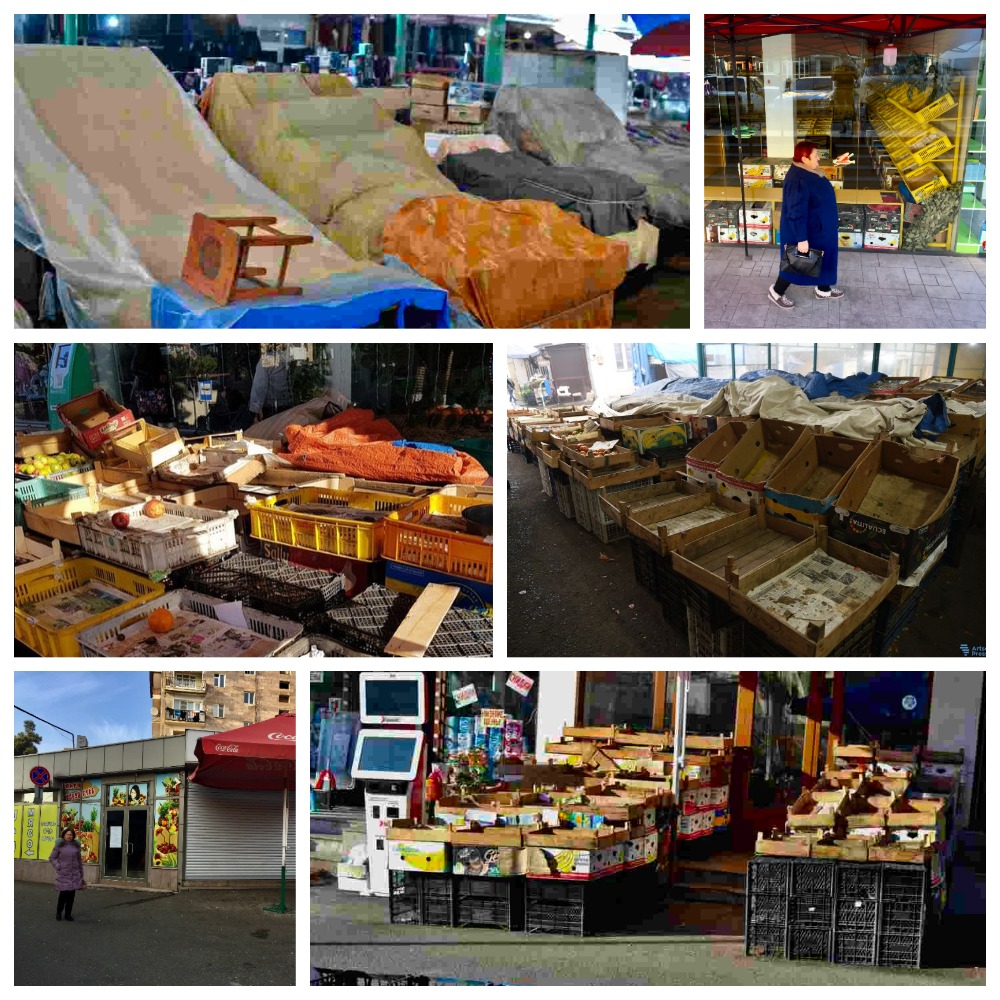
The activities of Edmon Marukyan, Armenia’s ambassador-at-large, Tigran Balayan, Armenia’s ambassador to the Netherlands and Luxembourg, social activist and journalists Mariam Avetisyan, Siranush Sargsyan, Nara Matinyan and others were specially selected in this propaganda work.
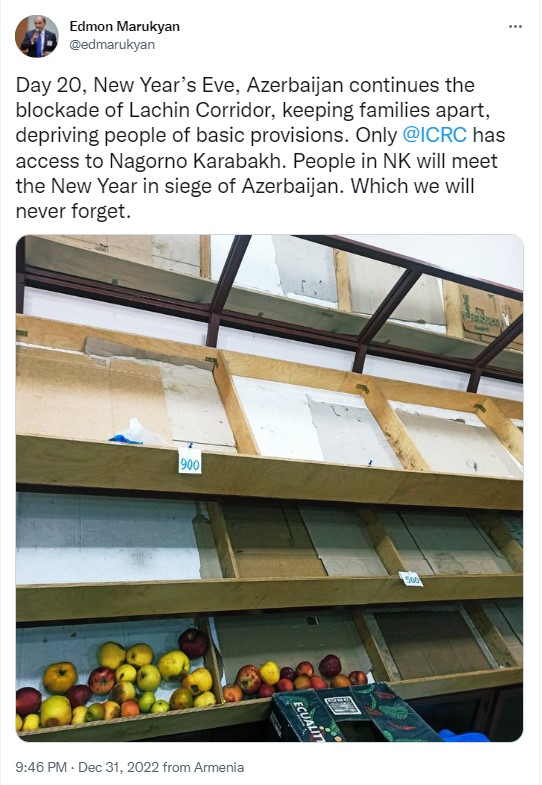
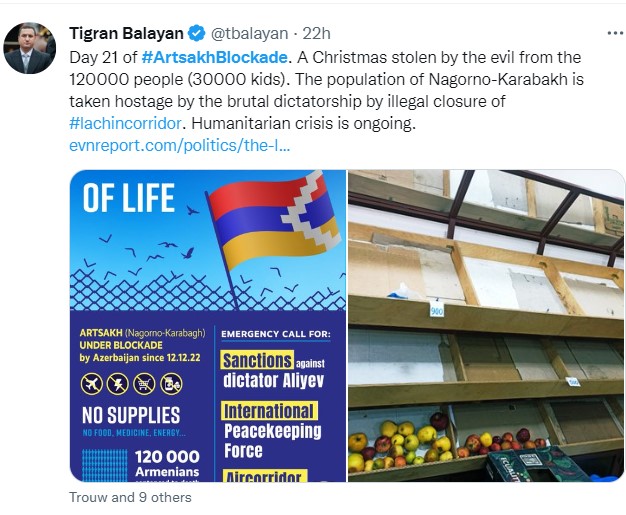

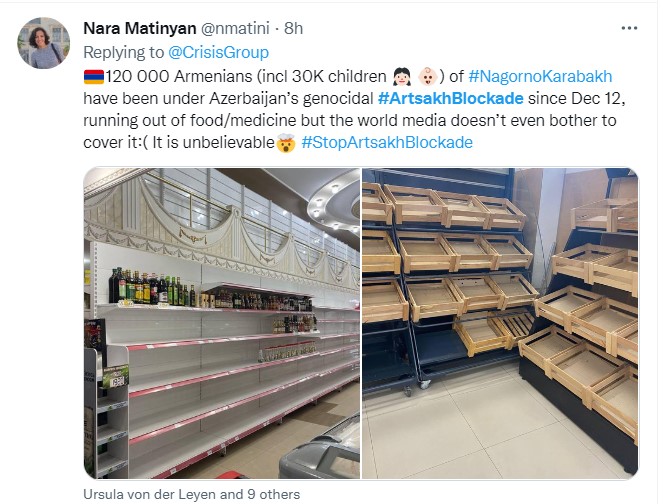
Faktyoxla Lab. based on the photos and videos shared by the Armenians conducted research and tried to determine whether the Azerbaijani citizens in Khankandi are really suffering from hunger, there is no gas, water in this city, and whether they couldn’t even find bread to eat.
Azerbaijani Twitter user Konul Sahin first exposed the "blockade, hunger and misery" show of Armenians. The 13 tweets shared by Sahin on December 31 and January 1 clearly explained the situation in Khankandi. Tweet1 Tweet2 Tweet3 Tweet4 Tweet5 Tweet6 Tweet7 Tweet8 Tweet9 Tweet10 Tweet11 Tweet12 Tweet13
After these posts of Konul Sahin, Armenian propagandists saw that they were exposed and were forced to appeal with such a text. The appeal reads: Please tell your friends about food on Instagram, don't share photos of meals with a full plate in restaurants in your stories. It's a shame. It's the 25th day of the blockade.
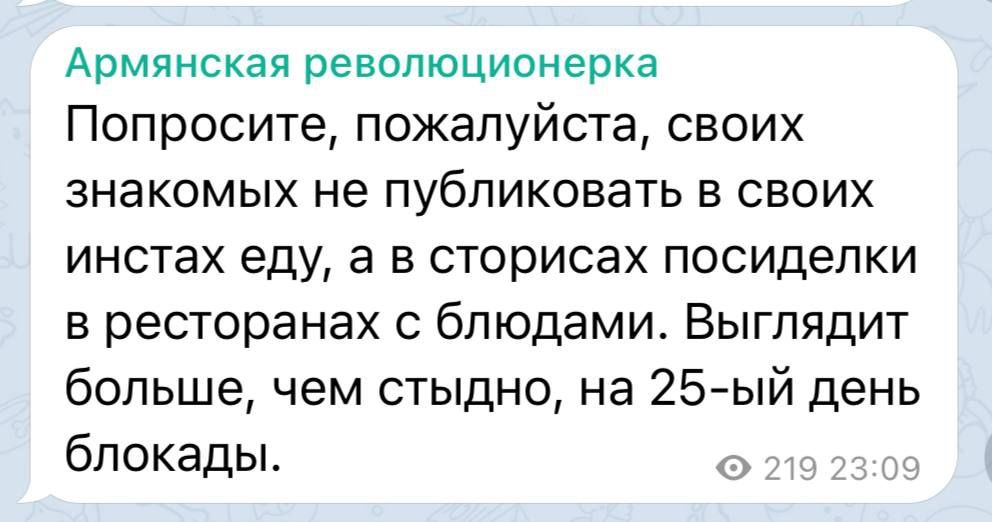
However, these appeals and warnings would be effective if the Armenian propagandists would correct their mistakes and not return to this topic. Unfortunately, we see the opposite. Now, with the fact-checking techniques we will present, we will try to prove how Armenians' propaganda is based on lies, and how they spread false information as truth.
Thus,
Fact 1. Let's pay attention to the food assortment and the number of customers of this "SBS market" store located on Hekimyan street 11 in Khankandi. If there is mass starvation in a city, if there is no food, why is there no queue in this store, and the counters are full of food products? Maybe the seller is "a Turk", so the Armenians boycotted this place?
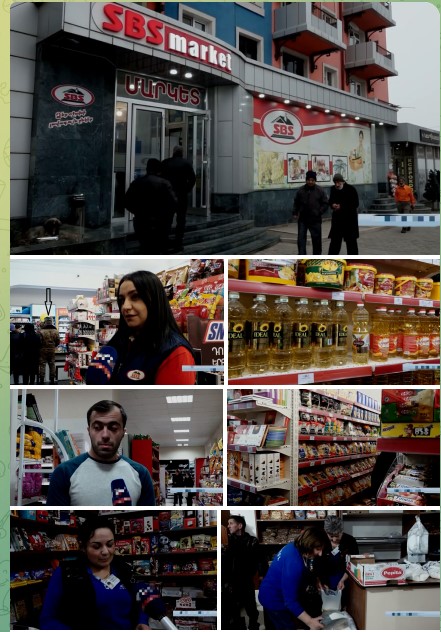
Fact 2. A website, which is the main propaganda mouthpiece of the separatists, shared news about the Khankandi market on December 20. The title of the news reads as follows: "The central market of Khankandi is under blockade today", shortly after the news title was changed: "The central market of Khankandi is closed today." At the time of this investigation, we did not find that news on the website at all. Apparently, they realized that no matter how much they hid it, they would allow the information to spread, and they wanted to secure themselves by completely deleting the news from the website.

However, one of the main propagandists of the separatist regime, Siranush Sargsyan, shared a photo from the closed market on December 27, and shared a "heartbreaking" tweet that read, "A mother came to cook soup or puree for her children and asked for a kilogram of potatoes and carrots."
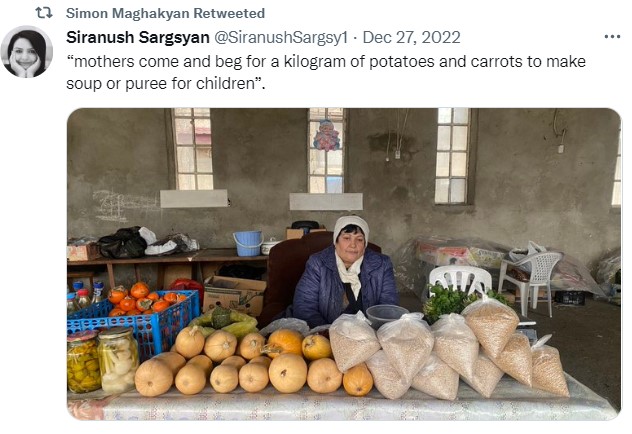
Fact 3. A propagandist named Arman Tatoyan once again spread false information about "120,000 Armenians being blockaded as a result of Azerbaijan's policy" and added photos of Khankandi stores with empty counters. One of those photos was shared in a relatively large size by a user named Kevork Oskanian. Watch out for those screenshots.
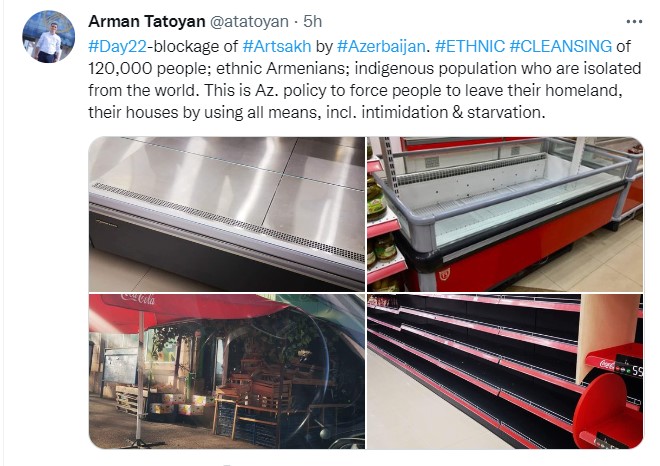
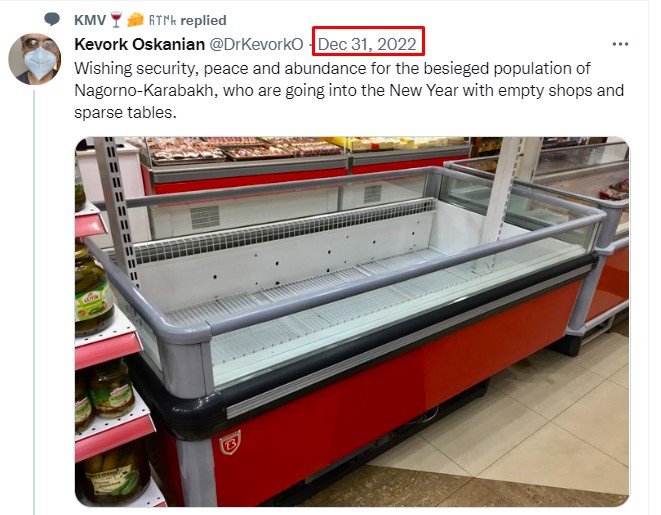
In the photo shared by Tatoyan, the meat and meat products arranged on top of the refrigerator are hidden. In the photo shared by Oskanian, it is visible even a little. We also offer a wide range of products hidden above the refrigerator.
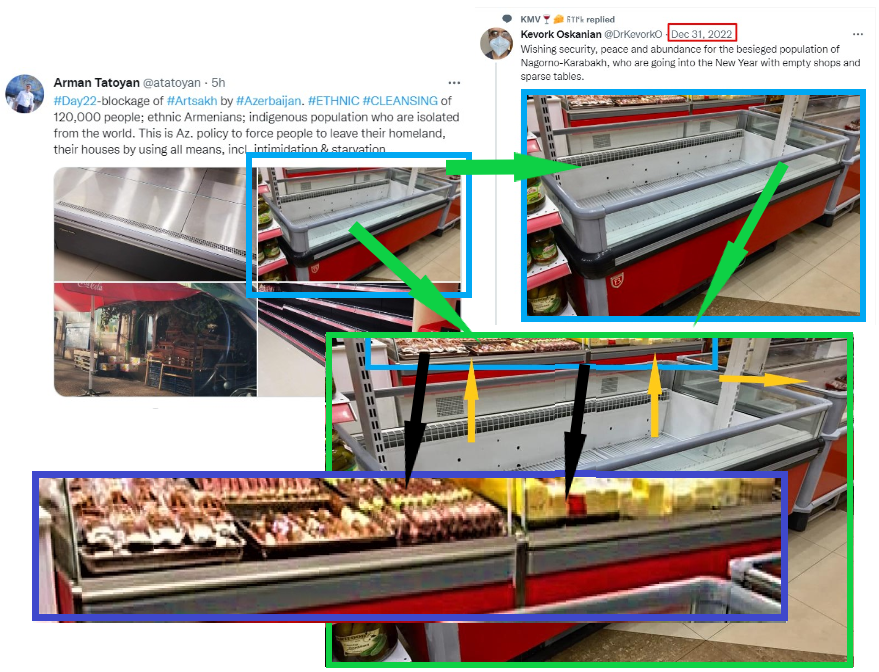
Armenians themselves expose their lies.
Fact 4. Armenians somehow convey to the world community that "hunger and misery" prevails in Khankandi with the photos of photographer Marut Vanyan. That information is sometimes distorted, sometimes taken out of context, sometimes completely fake. First, let's focus on the photo taken by this fake photographer.
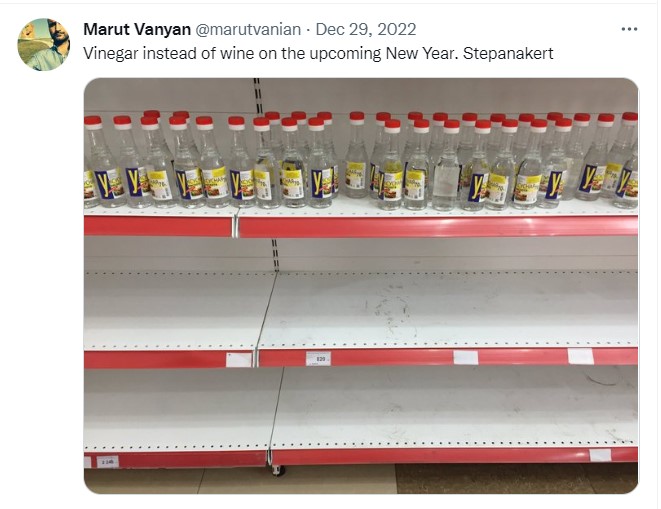
This is a full view of the counter in the market where that photo was taken. We got the full version of the photo in this Marut Vanyan tweet from another source. Note the counter to the right, left and upstairs, and the fridge full of food opposite of it.
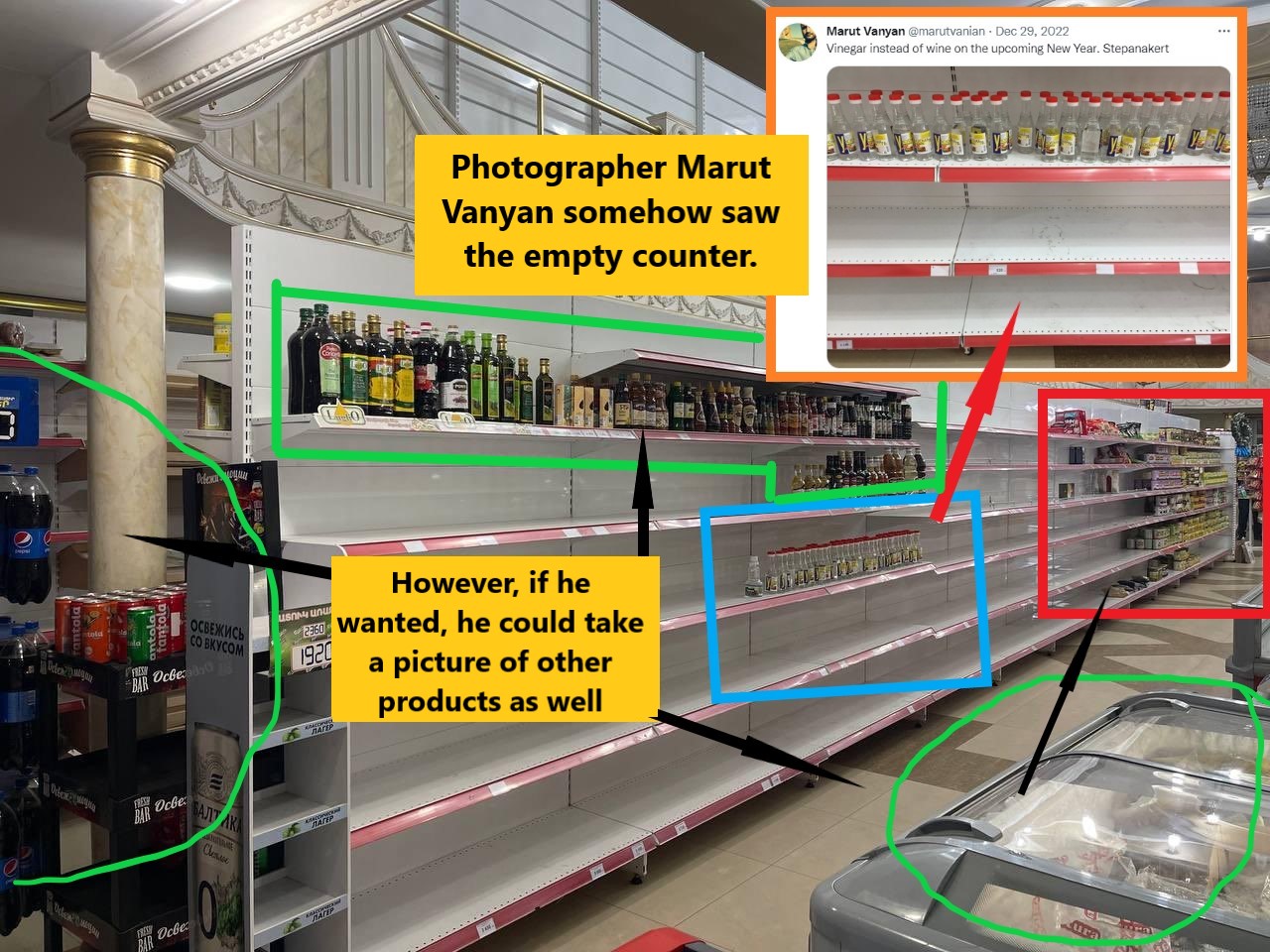
I wonder why the lens of this photographer's camera only sees the vinegar solution and nothing else?
Russian version available here
Fact 5. Due to the sunlight and shadows falling on the place where this photo was taken, we were able to confirm that the photo was taken on a weekend morning (between 8-8:30 AM). Many of the vendors have not yet started work, and a nearby clothing store is also closed. The variety of fruits and vegetables placed in the right corner of the photo is eye-catching. This is another example of fraud. They show the market counter, which has not yet opened for buyers, trying to present it as "scarcity and hunger".

We see a similar pattern in these photos.
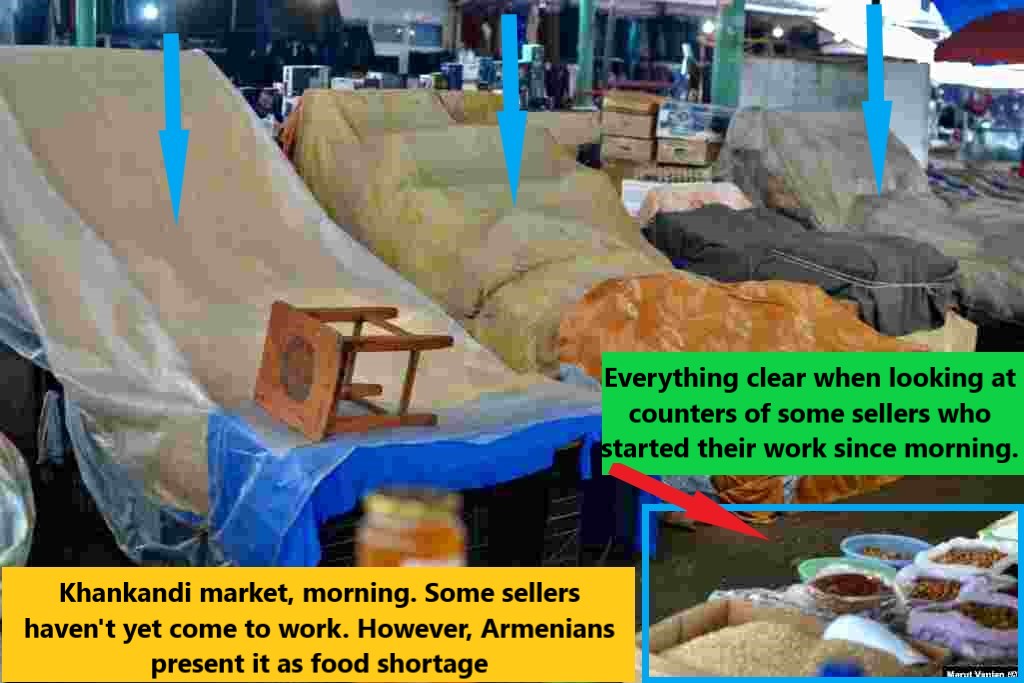

Fact 6. An empty refrigerator is displayed in one of the stores. But those who carried out this propaganda forgot to put aside the frozen meat and fish they placed in front of the store refrigerator and left such a scene of exposure as a "gift" to us.
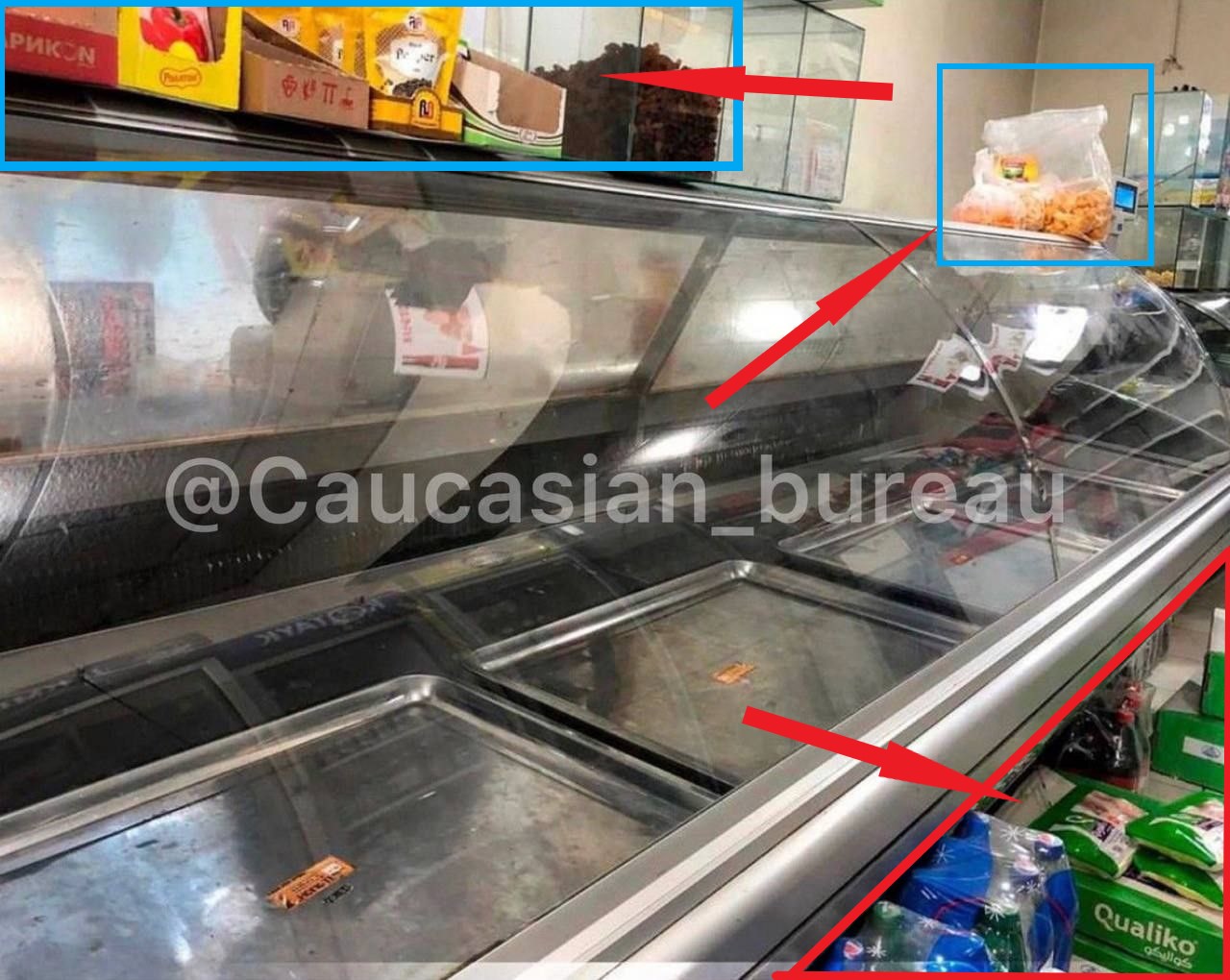
Fact 7. This photo is a good scenario for "camera jokes". Those who lived in the Soviet era remember this device well. It was possible to throw money into the machine and grab a gift through the iron hooks. Here, instead of a gift, an ordinary onion is placed. It can be seen from the comment that this device was installed in Khankandi and the residents were given such a chance because onions were scarce.
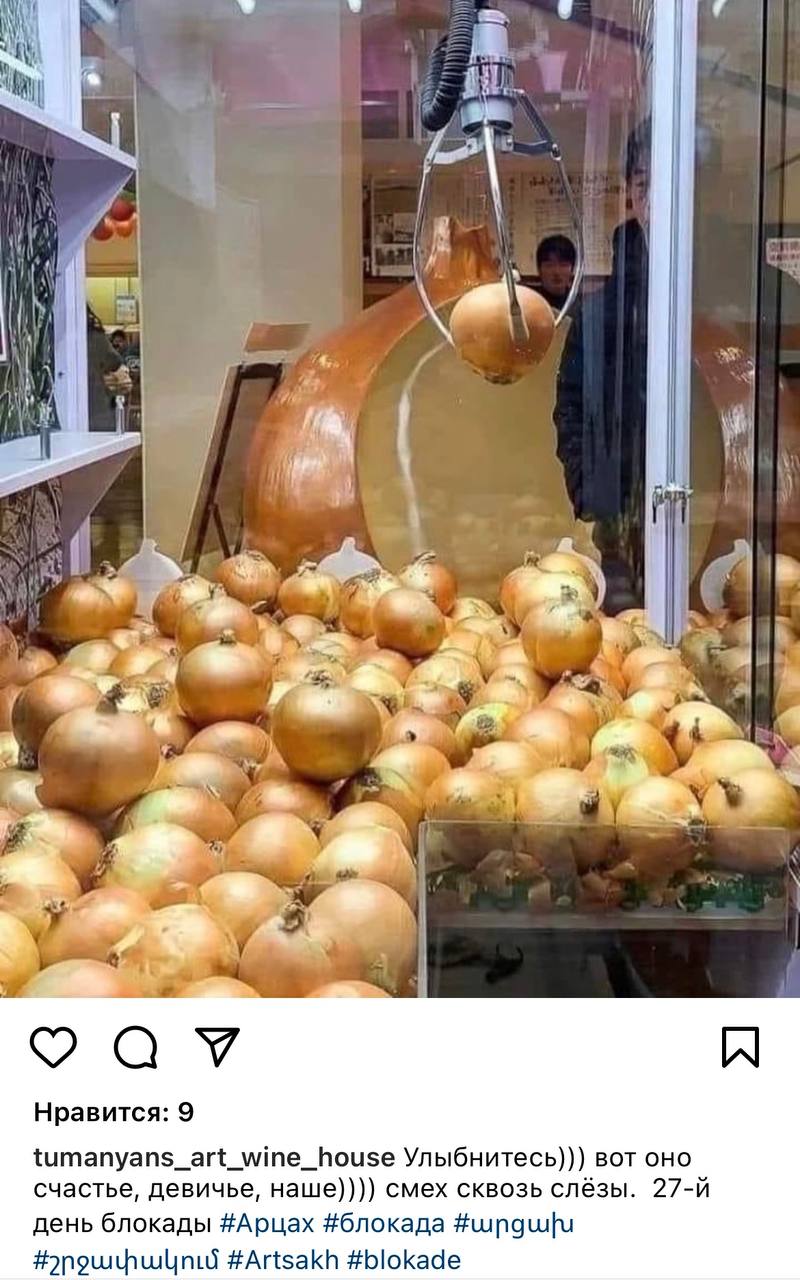
Armenians have thought of everything well, but they have been a little careless. We show the faces of the people standing near that device in a large format. Yes, as we have seen, they were representatives of one of the peoples of Southeast Asia.

So, why should a Southeast Asian join the onion competition in Khankandi? After all, there must have been an Armenian living in poverty here. Very simple. The photo wasn’t taken in Azerbaijan. It was taken three years ago.
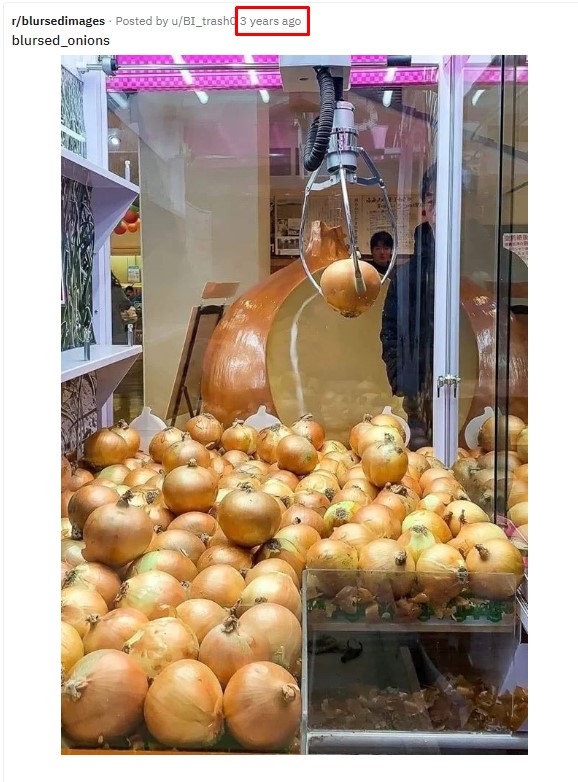
Fact 8. Let's pay attention to these two photos. Next time, empty showcase refrigerators are on display. If we look at it through the eyes of a foreigner, it is a very "sad" photo.
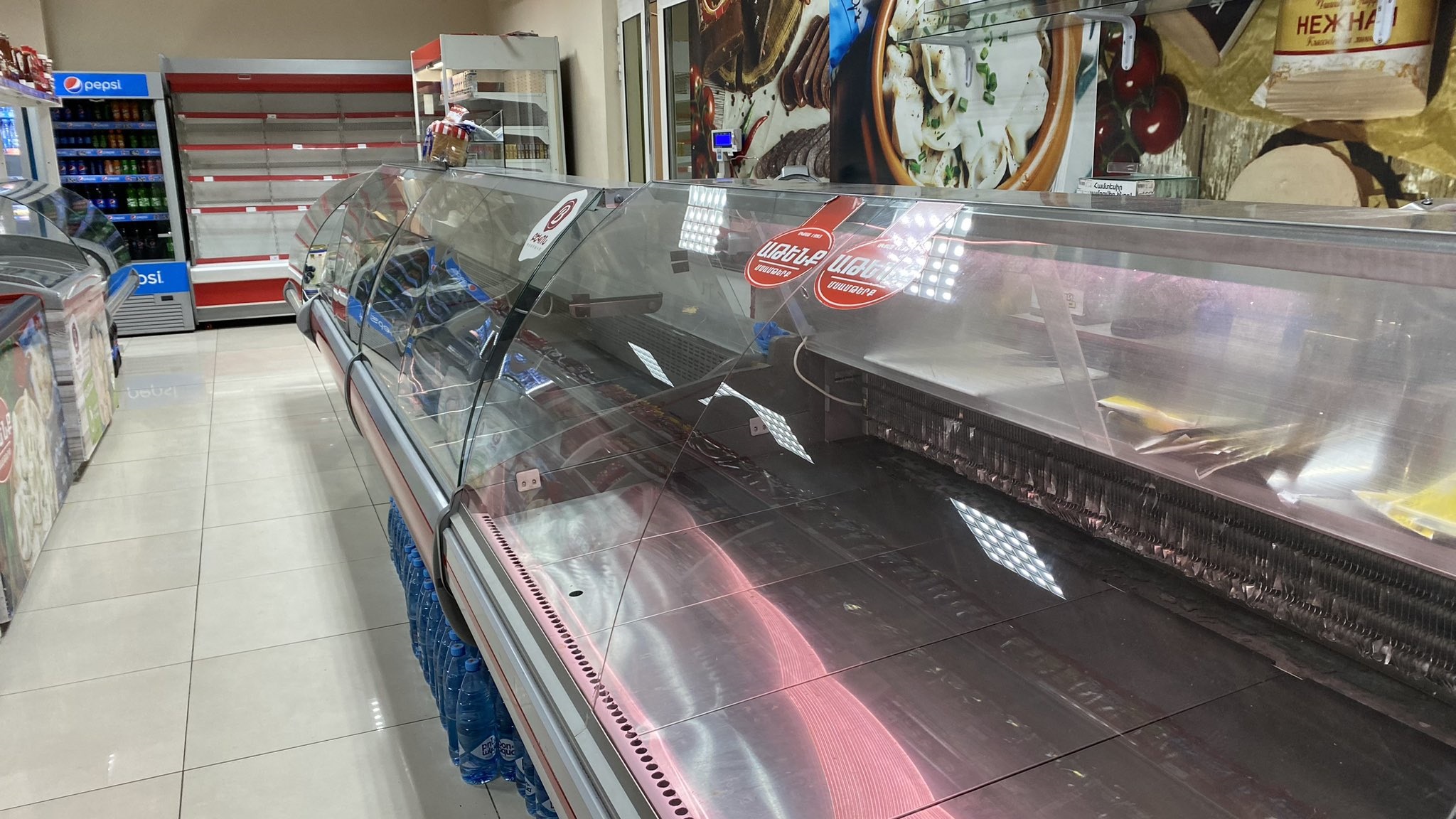
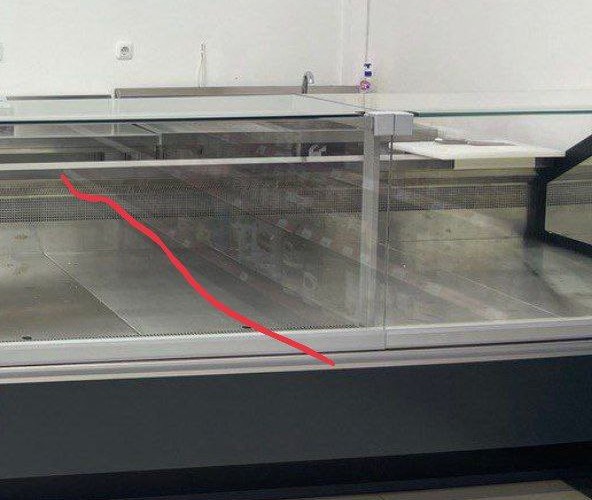
But... let's look at the photo from a wide lens with the help of technology. Notice the glass reflection of the food on the shelves in front of both refrigerators.

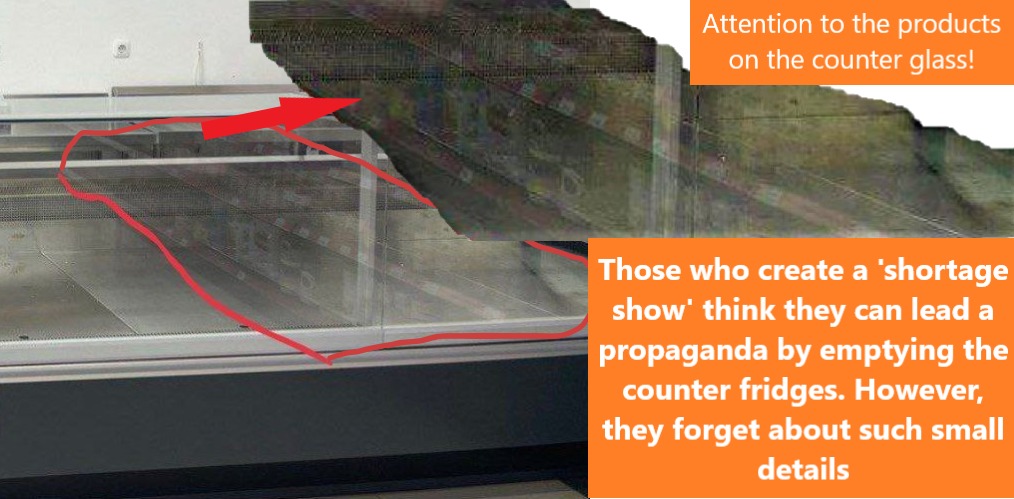
Fact 9. Apart from the CIS countries, there is no separate sale of cigarettes in any country in the world. In this photo, the seller is giving a cigarette to a customer. The cigarette in the seller's hand is Captain Black. Smokers know that this type of cigarette is high in tar, so regular use is dangerous for the body. In general, smoking is dangerous for health, but this type has more serious consequences. That's why there are people who prefer buying it in pieces. The Armenians use this moment for propaganda that "cigarette products are no longer found in stores".
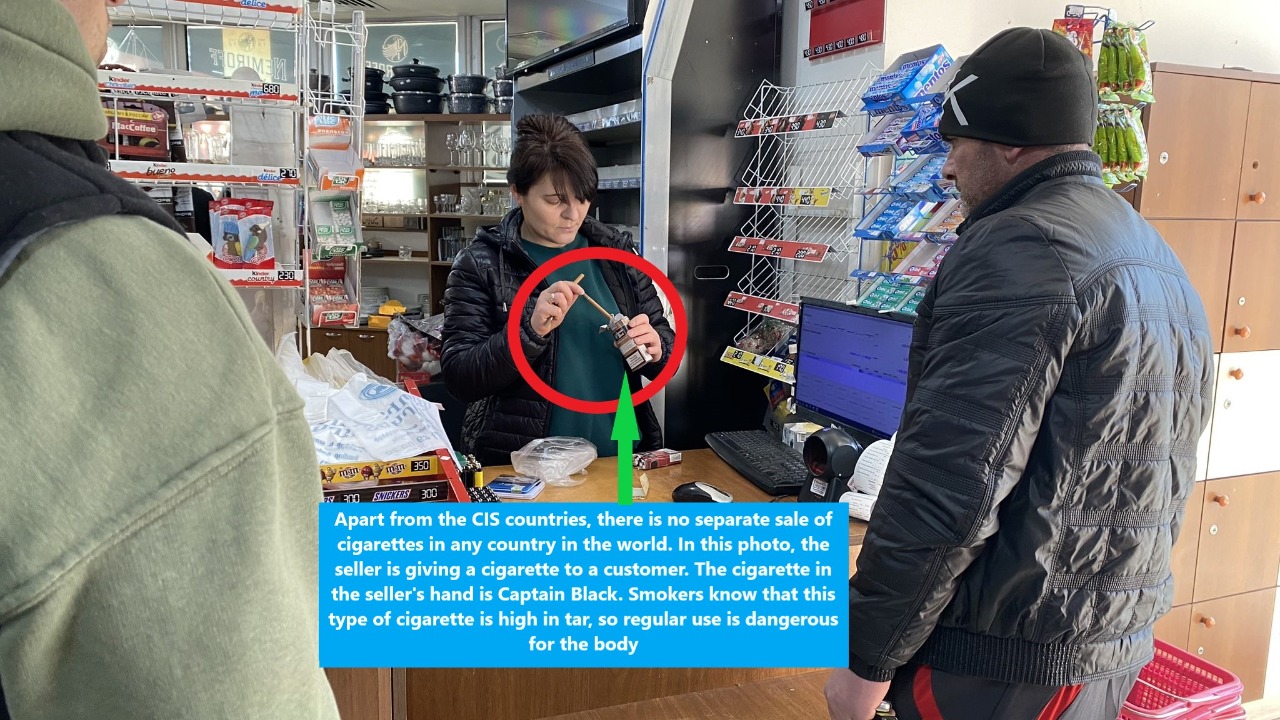
Fact 10. These photos of empty counters show the condition of stores at certain times of the day. Some of the pictures appear to be taken in the morning (the vendors have not yet started work) and some in the evening (the vendors have finished their work). All photos are determined based on sunlight, lighting of shops, structure of shadows and the angle of the sun.
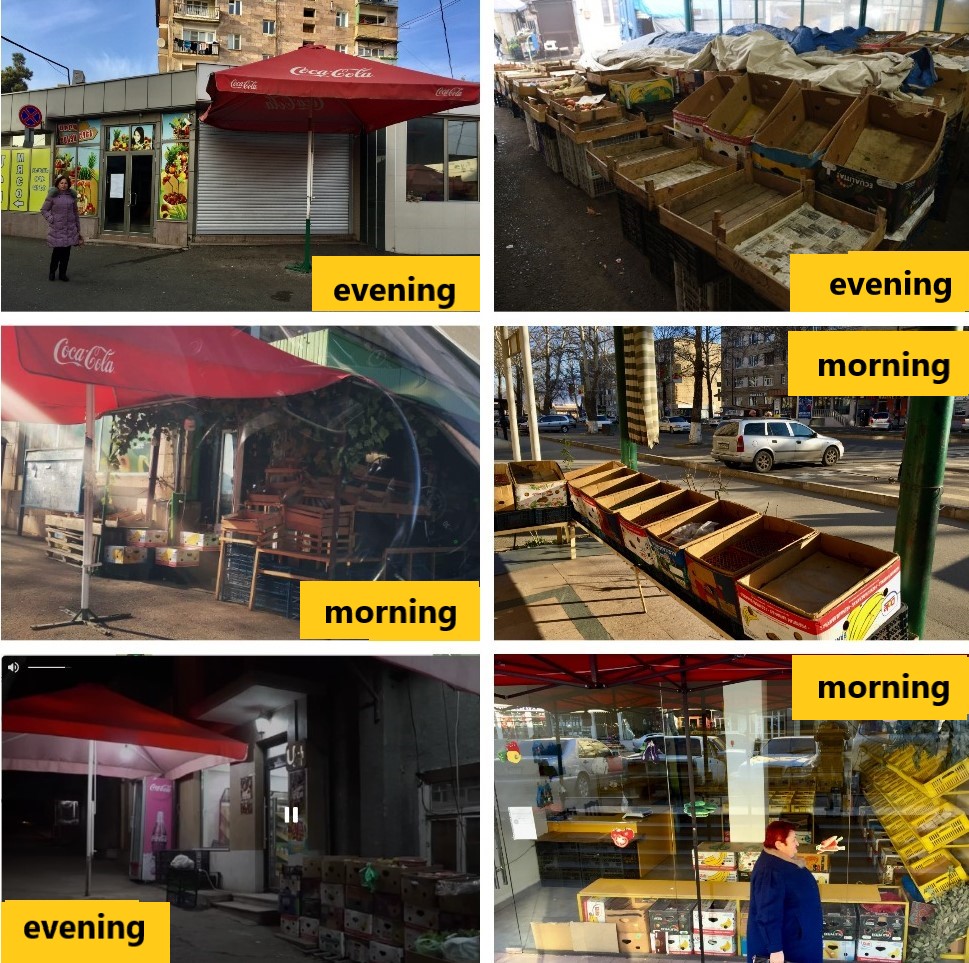
Fact 11. These photos show how poor, hungry and blockaded Armenians "suffered" on New Year's Eve.
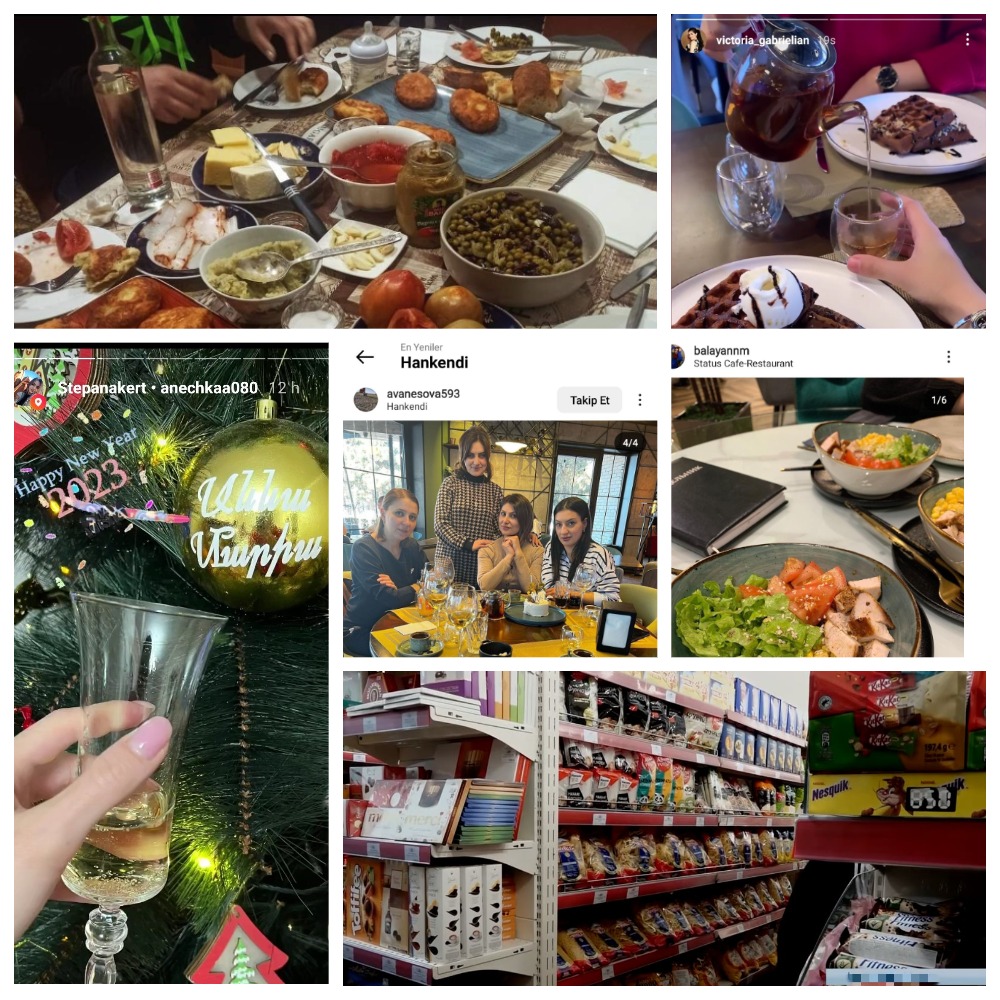
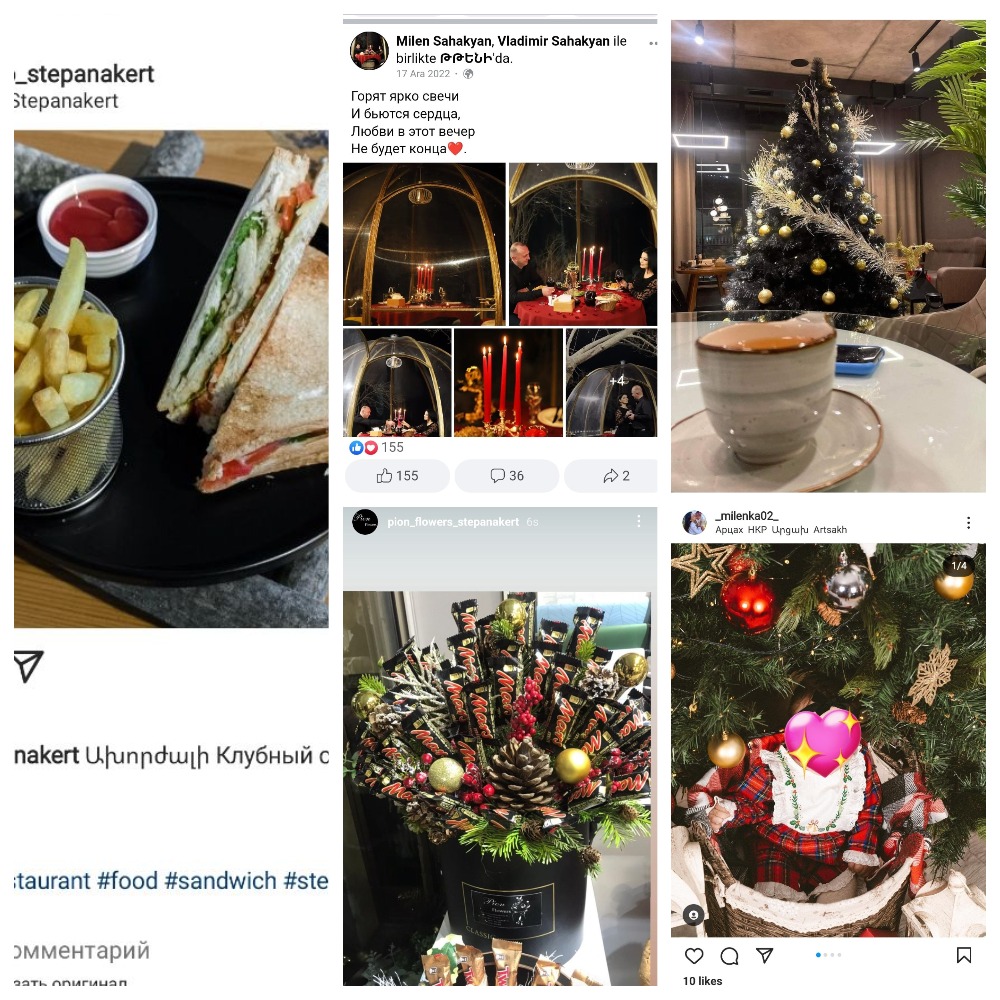
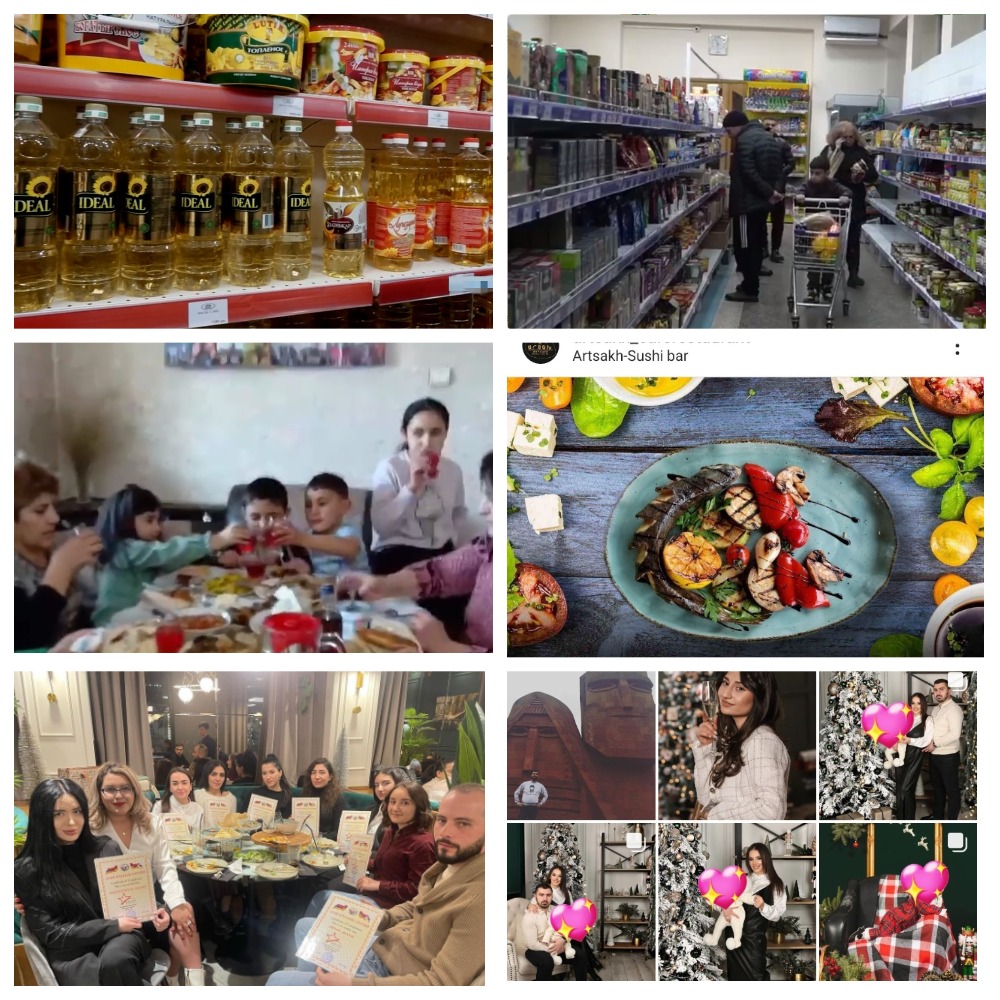
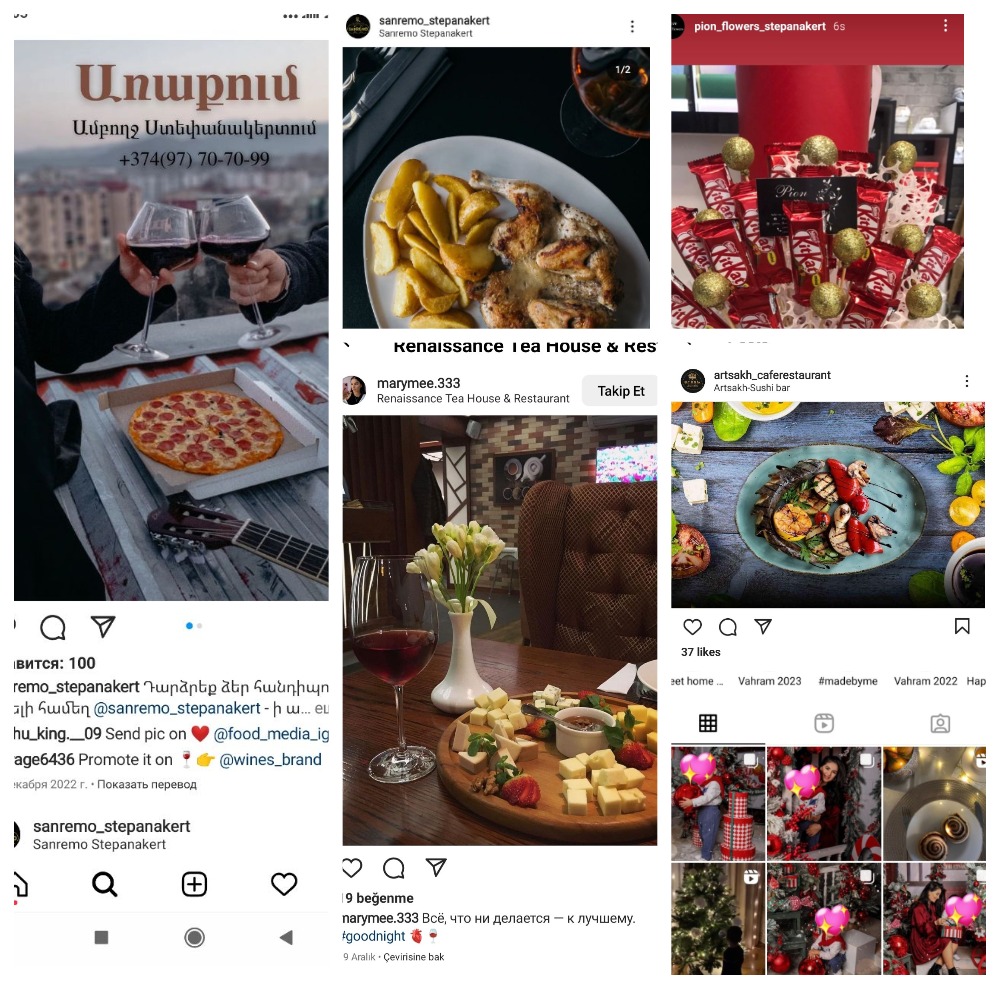
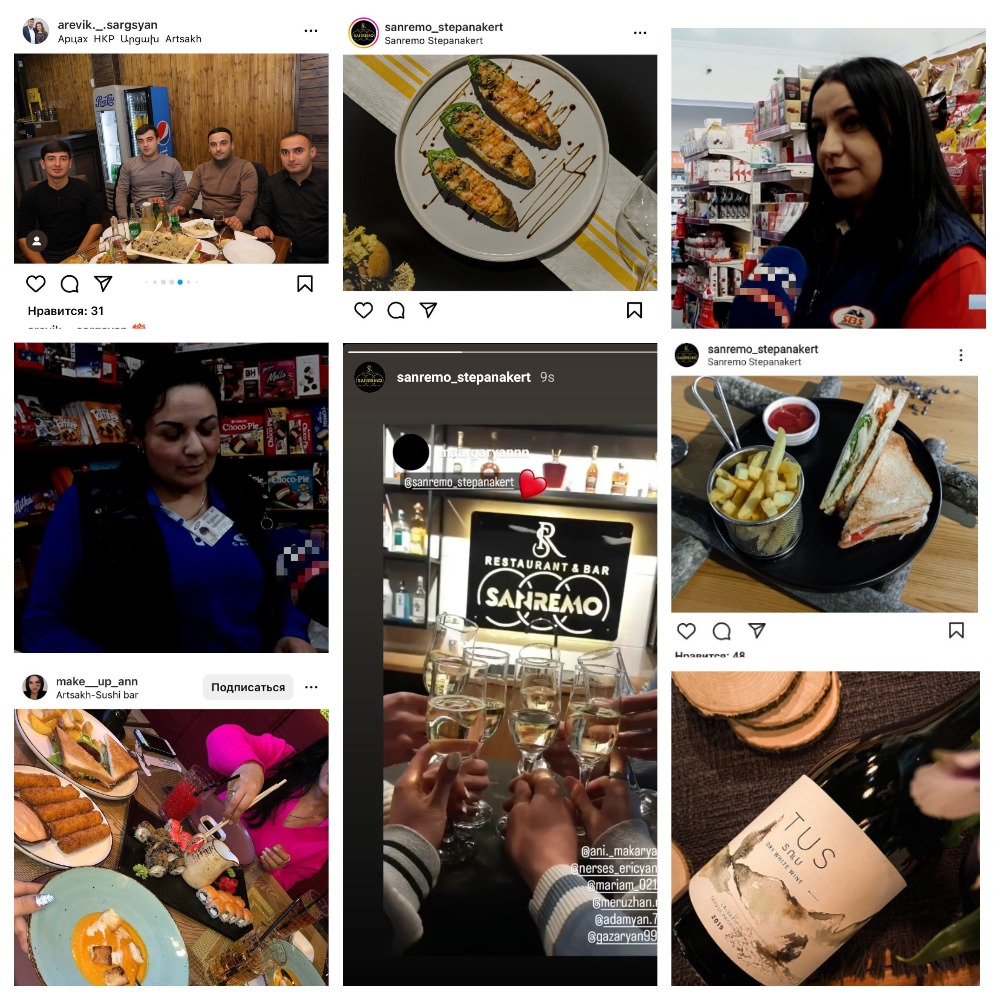
Fact 12. In these photos, we see residents of Khankandi "immersed" in darkness.
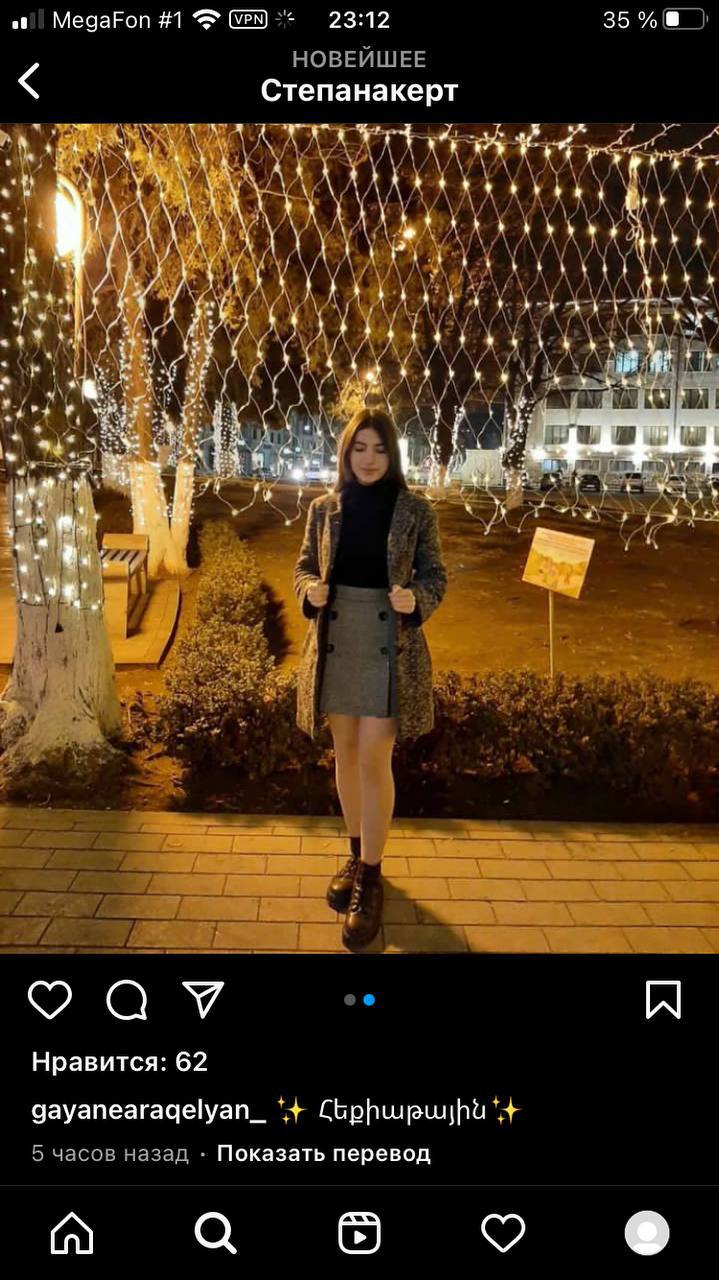

Let's pay attention to the next "gift" and thought of the photographer Marut Vanyan, whom we talked about earlier. It shows a group of people gathering in the street by candlelight.

But after this sharing, he could not find an answer to the hundreds of questions asked to him: "Why do they gather by candlelight when the street lamps and lights are on?"
Thus, we once again exposed the production of fake news by Armenian propagandists about the plight of Khankandi Armenians living under "blockade."




















